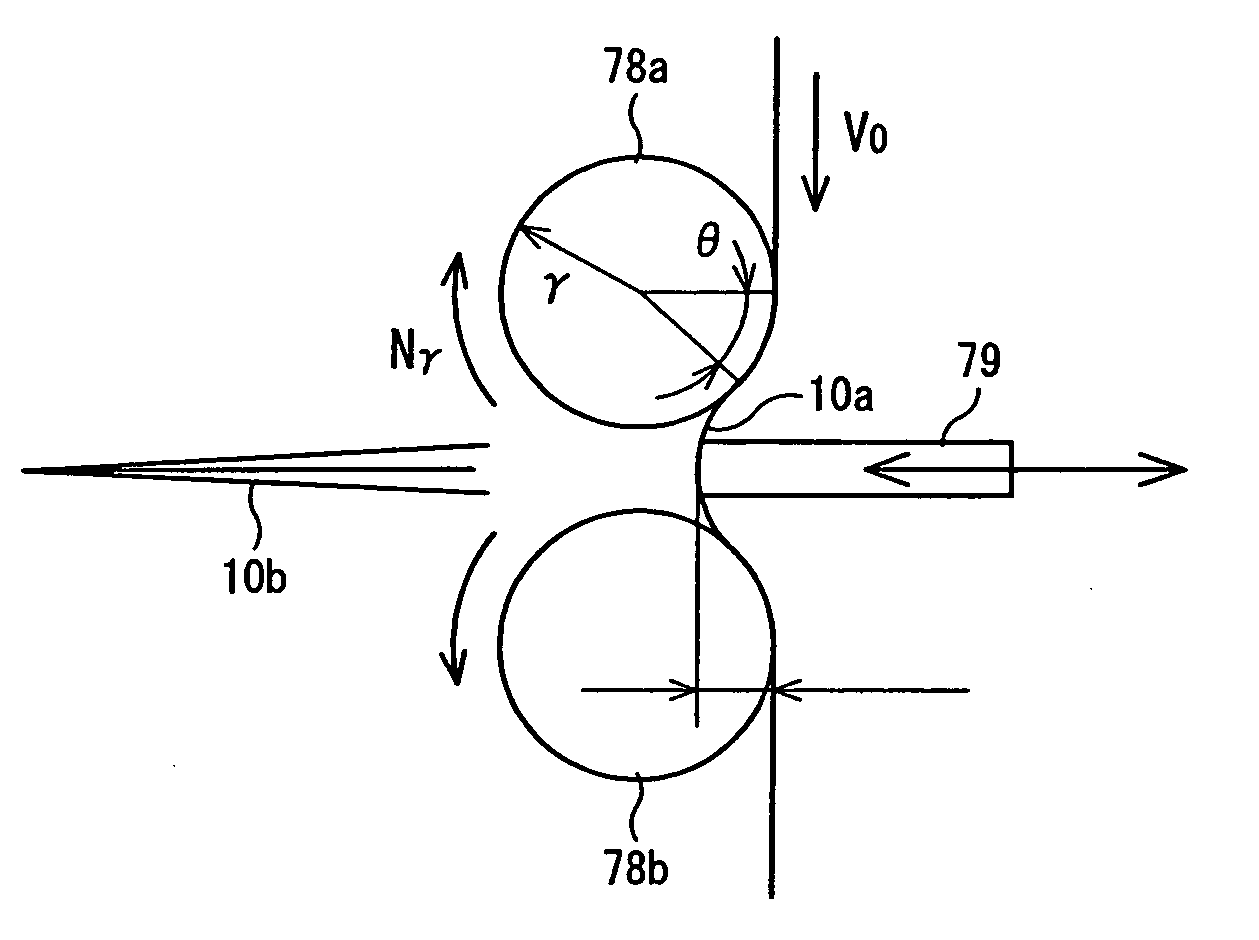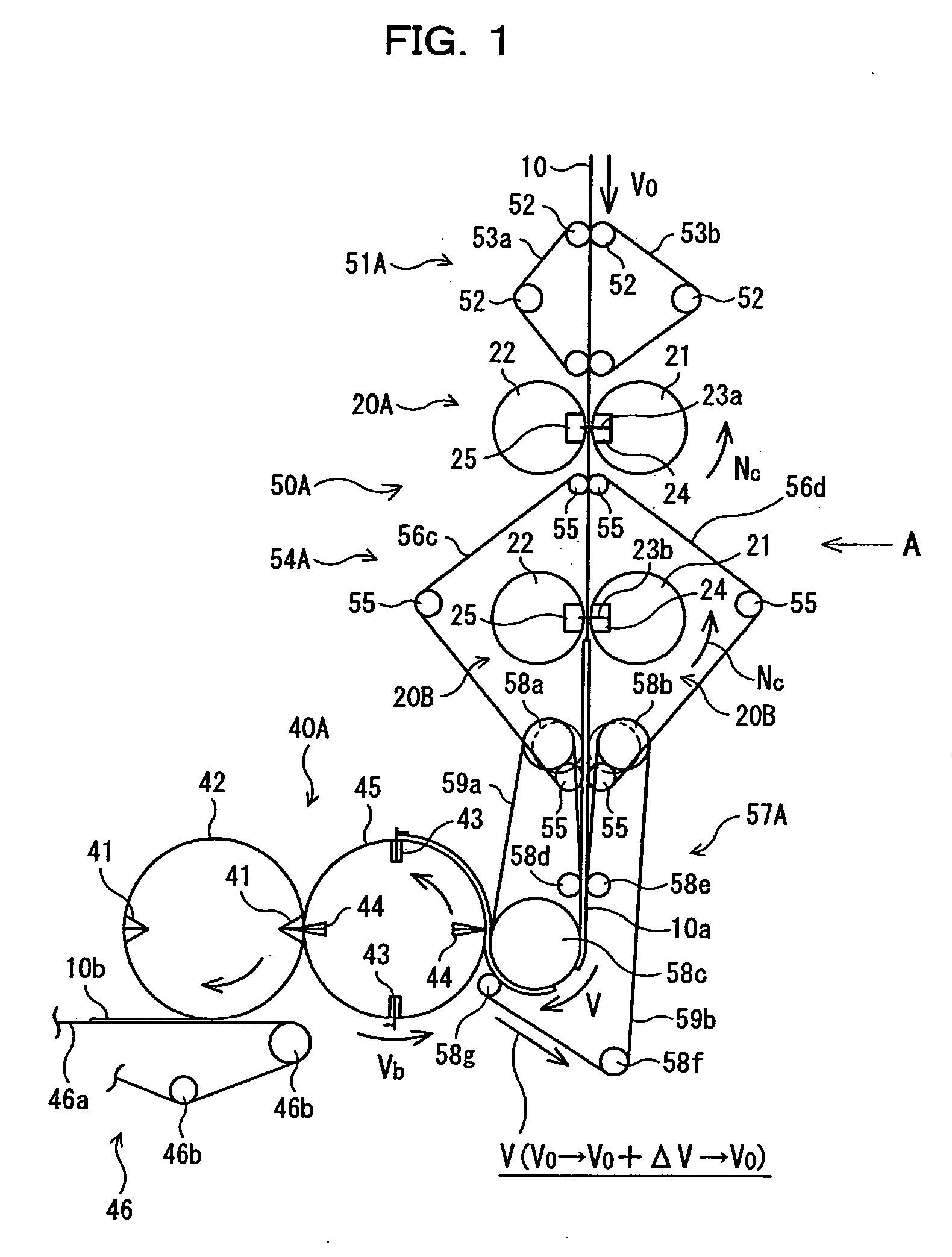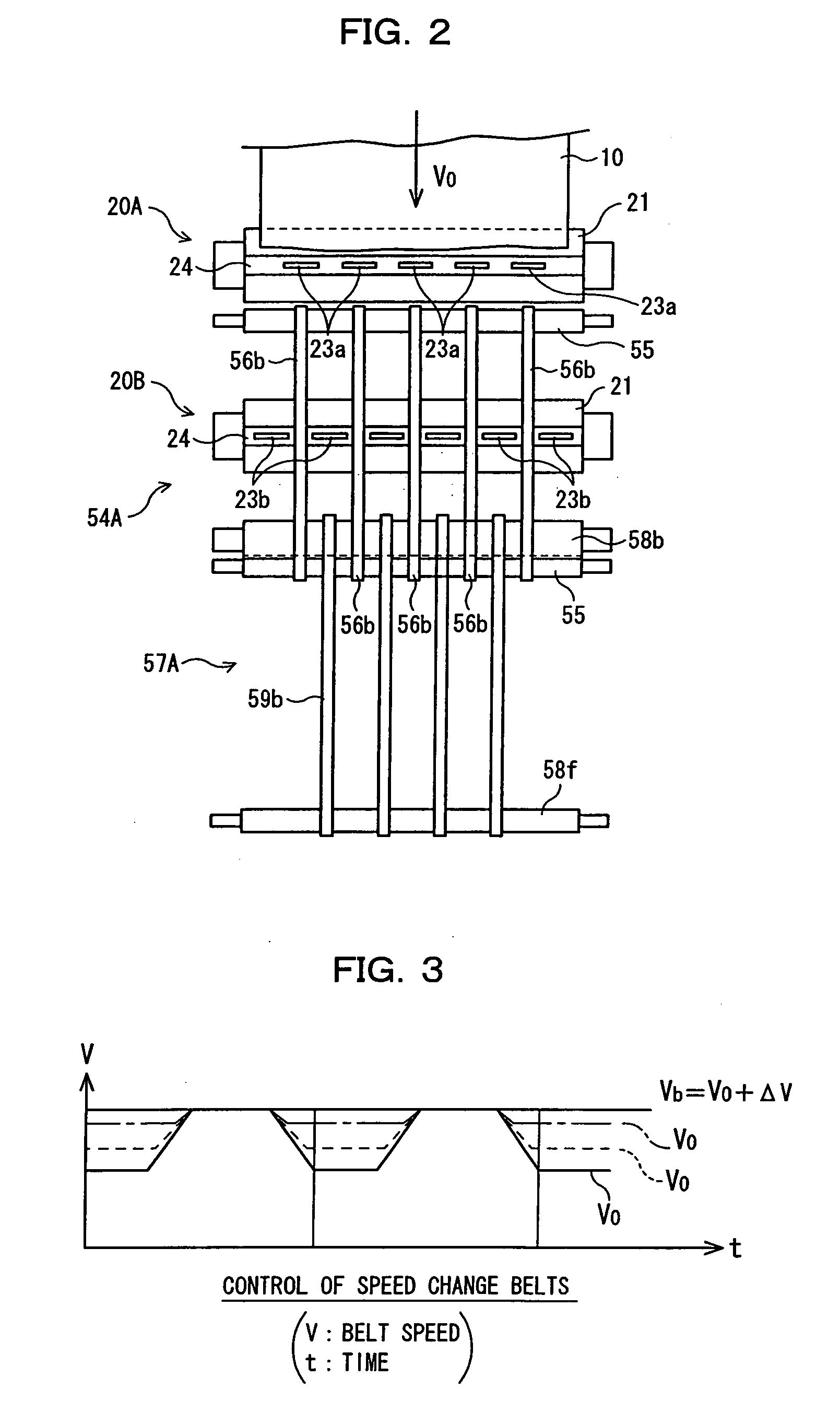Folder for rotary press
a rotary press and folding technology, applied in the field of folding machines, can solve the problems of reduced folding accuracy, machine shutdown, and difficulty in ensuring sufficient folding accuracy, and achieve the effects of improving printing quality, high degree of accuracy, and accurately processing
- Summary
- Abstract
- Description
- Claims
- Application Information
AI Technical Summary
Benefits of technology
Problems solved by technology
Method used
Image
Examples
first embodiment
[0134] Initially, a first embodiment of the disclosed embodiment will be described. FIGS. 1 to 3 show a folding machine for a rotary printing machine constructed in accordance with the first embodiment of the disclosed embodiment. FIG. 1 is a schematic side view showing the construction of the folding machine; FIG. 2 is a schematic front view (taken in a direction indicated by an arrow A in FIG. 1) showing the essential parts; and FIG. 3 is a speed characteristic diagram used to explain how control of speed change belts is performed. Note in FIGS. 1 and 2 that the same parts as those of the conventional example (FIGS. 22 to 24) are given the same reference numerals.
[0135] For example, as shown in FIG. 22, a rotary printing machine according to this embodiment comprises eight major parts: a paper feeder part 1; an infeed part 2; a printing part 3; a drying part 4; a cooling part 5; a web passing part 6; a folding machine 7; and a paper discharger part 8 for discharging a sheet folde...
second embodiment
[0166] Next, a second embodiment of the disclosed embodiment will be described. FIGS. 4 to 9 show a folding machine for a rotary printing machine constructed in accordance with the second embodiment of the disclosed embodiment. FIG. 4 is a schematic side view showing the essential parts of the folding machine and FIGS. 5 to 9 are schematic side views used to explain how a sheet 10a is delivered. Note in FIGS. 4 to 9 that the same parts as those of FIGS. 1 and 2 are given the same reference numerals and therefore a description of the same parts is partially omitted. In FIGS. 4 to 9, it is shown that a web 10 and a sheet 10a are horizontally conveyed. However, as with the first embodiment, they are conveyed in a vertical direction.
[0167] The folding machine 7 of this embodiment is disposed downstream of the drag roller 11 and triangular plate 12 (see FIG. 23). As shown in FIG. 4, as with the first embodiment, from the upstream side the folding machine 7 is equipped with an upstream b...
third embodiment
[0195] Next, a third embodiment of the disclosed embodiment will be described. FIGS. 10(a) to 13(d) show a folding machine for a rotary printing machine constructed in accordance with the third embodiment of the disclosed embodiment. FIGS. 10(a) and 10(b) are schematic diagrams used to explain the principle of a non-circular drive roller; FIG. 11 is a schematic diagram used to explain the drive speed of the non-circular drive roller; FIGS. 12(a) to 12(c) are schematic diagrams used to explain operation of the non-circular drive roller; and FIGS. 13(a) to 13(d) are schematic diagrams used to explain variations of the non-circular drive roller.
[0196] In this embodiment, attention is paid to the drive system for the speed change conveyor belts 59c, 59d used in the downstream belt conveyor of the first and second embodiments, and the periodic speed modulation of a speed change conveyor belt is performed without controlling the speed of a drive source such as a motor, etc. More specific...
PUM
| Property | Measurement | Unit |
|---|---|---|
| cut-off length | aaaaa | aaaaa |
| conveying speed | aaaaa | aaaaa |
| speed | aaaaa | aaaaa |
Abstract
Description
Claims
Application Information
 Login to View More
Login to View More - R&D
- Intellectual Property
- Life Sciences
- Materials
- Tech Scout
- Unparalleled Data Quality
- Higher Quality Content
- 60% Fewer Hallucinations
Browse by: Latest US Patents, China's latest patents, Technical Efficacy Thesaurus, Application Domain, Technology Topic, Popular Technical Reports.
© 2025 PatSnap. All rights reserved.Legal|Privacy policy|Modern Slavery Act Transparency Statement|Sitemap|About US| Contact US: help@patsnap.com



